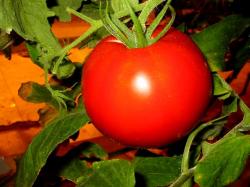United Fresh Releases Updated Industry Metrics For Tomato Food Safety
December 23, 2009 | 2 min to read

WASHINGTON, D.C. With an increased spotlight on food safety issues, buyers and suppliers of fresh and fresh-cut tomatoes now have a reliable set of auditing benchmarks, thanks to the combined efforts of over 100 stakeholders from all stages of the fresh tomato supply chain.
Today, United Fresh released the Food Safety Programs and Auditing Protocol for the Fresh Tomato Supply Chain, 2009, a harmonized food safety audit protocol identifying policies and practices that the fresh tomato industry expects its facilities to have in place to minimize the microbiological hazards associated with fresh and fresh-cut tomato production and handling.
“This effort was a true collaboration between the tomato industry, our customers and government, said Ed Beckman, president of California Tomato Farmers and participant in the development of the document. Not only is there agreement on standardized risk reduction protocol for the entire supply chain, there’s agreement that a single commodity-specific audit has greater merit than multiple generic audits. The growers of California Tomato Farmers were pleased to successfully pilot the program and look forward to working with our customers on full implementation in 2010.”
Growing out of Uniteds 2008 second edition of the Commodity Specific Guidelines for the Fresh Tomato Supply Chain, the 2009 document includes four sets of tomato food safety protocols: Open Field Production, Harvest and Field Packing; Greenhouse; Packinghouse; and Repacking and Distribution. Each set contains auditable requirements, or items, that the protocol developers concluded should be attainable and in place for any North American fresh tomato operation, regardless of region, size, growing practice or sub-commodity handled. Additionally, each protocol is accompanied by a checklist which provides an audit format that auditors can use to assess and record compliance.
This document will be a valuable asset for the fresh and fresh-cut tomato industry in terms of reducing confusion and conflicting expectations, said Dr. David Gombas, United Fresh senior vice president of food safety and technology and corresponding editor of the document. We found that multiple stakeholders in the tomato industry were unsure of what constituted compliance. By bringing together a critical mass from the U.S. and Mexico fresh tomato supply chain, including suppliers, customers and representatives of FDA and USDA, the industry was able to come to consensus on what was reasonable and attainable by growers and handlers, and also satisfied customers expectations.
The document has already been met with favorable reviews from stakeholders within the tomato industry, including Reggie Brown, executive vice president of the Florida Tomato Exchange.
“The Florida tomato industry is enthusiastic about the partnerships across the industry that created these auditing protocols, he said. The standardization will allow greater attention on the implementation of good food safety practices rather than redundant audits.”
The next step, which has already begun, is a training course for government and private sectors auditors in how to perform audits according to the harmonized tomato food safety protocol.
To review or download Food Safety Programs and Auditing Protocol for the Fresh Tomato Supply Chain, 2009, please click here, and for more on United Fresh efforts in the field of food safety, visit www.unitedfresh.org.
Source: United Fresh Produce Association
